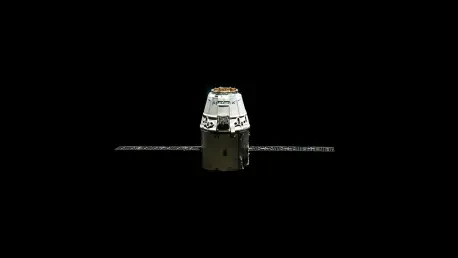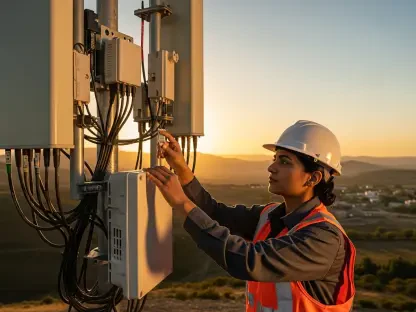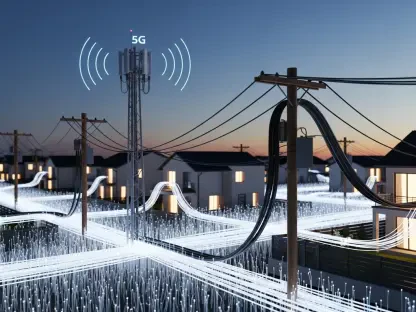The telecommunications landscape in the United States has long been dominated by three major mobile network operators—AT&T, Verizon, and T-Mobile—leaving little room for new entrants to challenge their stronghold. However, recent developments surrounding SpaceX, particularly its $17 billion acquisition of wireless spectrum from EchoStar, have sparked intense speculation about whether the company could emerge as a fourth national player. Through its Starlink direct-to-device (D2D) satellite services, SpaceX has captured the imagination of industry observers, with discussions buzzing across professional platforms. Yet, despite the excitement, a deeper dive into technical capabilities and market realities raises critical questions about the feasibility of such a disruption. This article explores the potential for SpaceX to redefine the mobile network arena, weighing the challenges against unique opportunities that could position the company in an unexpected role within the telecommunications ecosystem.
Technical Barriers to Competing with Terrestrial Giants
The dream of SpaceX rivaling established mobile network operators quickly encounters significant technical hurdles that temper enthusiasm. Analysts across the board point to the stark inefficiency of satellite-based D2D services when compared to terrestrial mid-band 5G networks. Experts note that Starlink’s spectral efficiency lags dramatically behind, with estimates suggesting it is thousands to over a million times less effective than current 5G standards. This gap in capacity density means that delivering the high-speed, high-volume data services demanded by today’s consumers and businesses remains out of reach for satellite technology. Such limitations are not merely academic; they translate into real-world constraints that prevent SpaceX from matching the performance benchmarks set by traditional operators, casting doubt on its ability to serve as a direct competitor in densely populated or high-traffic areas where network reliability is paramount.
Beyond spectral inefficiencies, another formidable obstacle lies in the challenge of indoor coverage, a critical aspect of modern mobile connectivity. With approximately 80% of daily activities occurring indoors, where satellite signals struggle to penetrate buildings, Starlink faces a significant barrier to providing consistent service. Uplink connectivity from devices to satellites is notoriously weak in such environments, further compounding the issue. While some suggest that indoor Wi-Fi could bridge this gap, the solution is far from seamless due to authentication complexities and inconsistent availability. This limitation severely restricts the practicality of relying on satellite services for everyday use, particularly in urban settings where users expect uninterrupted access. As a result, the notion of SpaceX stepping into the ring as a full-fledged mobile operator appears increasingly improbable when viewed through the lens of these persistent technical shortcomings.
Economic and Operational Constraints in the Mobile Market
The economic realities of operating a satellite-based network add another layer of complexity to SpaceX’s aspirations in the mobile sector. Space-based bandwidth comes at a prohibitively high cost compared to terrestrial alternatives, making it an inefficient choice for delivering the vast data volumes required by modern mobile users. Industry analysts argue that these financial constraints, coupled with limited capacity, render it unfeasible for Starlink to position itself as a replacement for or direct rival to existing 5G networks. The narrative of D2D services as a viable 5G alternative has been met with skepticism, with some experts dismissing such claims as overly optimistic or disconnected from operational realities. Instead, the focus shifts to whether SpaceX can carve out a sustainable niche that does not require it to compete head-on with the established giants dominating the U.S. market.
Operational challenges further underscore the difficulties of transforming SpaceX into a national mobile network operator. Building and maintaining a network capable of rivaling terrestrial providers would demand not only immense capital investment but also a complete overhaul of current satellite infrastructure to address capacity and coverage issues. Unlike traditional operators, which have spent decades refining their networks to handle peak demand in urban centers, Starlink’s technology is inherently geared toward broad, low-density coverage rather than concentrated, high-throughput service. This fundamental mismatch suggests that the path to becoming a fourth major player would be fraught with obstacles far beyond the scope of spectrum acquisition. The consensus points to a more pragmatic role for SpaceX, one that leverages its unique capabilities without attempting to replicate the comprehensive service model of its terrestrial counterparts.
A Niche Role Through Collaboration and Innovation
Despite the barriers to direct competition, SpaceX holds considerable potential to redefine its place in the telecommunications landscape through specialized applications and strategic partnerships. Starlink’s D2D services are well-suited for niche markets, such as providing connectivity for Tesla vehicles, trucks, planes, trains, and military or public safety operations. Additionally, applications in the Internet of Things (IoT) and satellite-based private 5G networks for remote industrial sites, like oil exploration operations, present viable opportunities. These use cases highlight how SpaceX can address specific connectivity needs that terrestrial networks may struggle to meet, particularly in remote or mobile environments where traditional infrastructure falls short. This focus on targeted solutions positions the company as a complementary force rather than a disruptive threat to the status quo.
Another promising avenue for SpaceX lies in its potential to act as a global connectivity partner for enterprises and hyperscalers seeking wide-reaching, low-bandwidth solutions. By collaborating with local mobile network operators across various countries and amassing spectrum internationally, Starlink can establish itself as a unique global carrier. Analysts predict that partnerships, rather than competition, will define the company’s trajectory, allowing it to cater to underserved areas and specialized demands without overextending its technical or financial resources. This approach not only mitigates the limitations of satellite technology but also capitalizes on SpaceX’s ability to operate on a scale that transcends regional boundaries, offering a fresh perspective on how connectivity can be delivered in an increasingly interconnected world.
Shaping a Unique Path in Telecommunications
Looking back, the speculation surrounding SpaceX’s ambitions to join the ranks of U.S. mobile network operators revealed a fascinating intersection of innovation and practicality. While technical inefficiencies, indoor coverage challenges, and high operational costs ultimately dashed hopes of Starlink emerging as a direct competitor to industry leaders, the journey illuminated alternative paths worth pursuing. Moving forward, the focus should shift to fostering collaborations with existing operators to enhance coverage in underserved regions and investing in niche applications that play to satellite technology’s strengths. Exploring regulatory frameworks that support global partnerships could also unlock new opportunities for SpaceX to deliver value on an international scale. By embracing this complementary role, the company can contribute meaningfully to the evolving telecommunications landscape, proving that sometimes the most impactful disruptions come not from rivalry, but from reimagining the rules of engagement.









